The PMP Exam – all you need to know
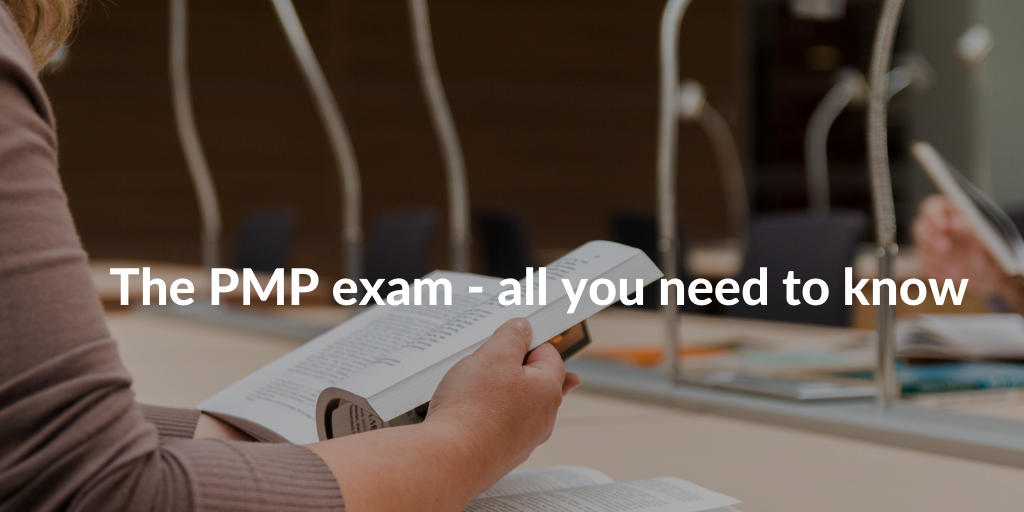
On January 2nd 2021, the PMP certification exam promoted by the Project Management Institute (PMI) was updated with some changes. All the features of the exam currently in use at the Project Management Institute are described in this post.
Prerequisites for accessing the PMP exam
In order to register for the exam, each candidate must meet all the prerequisites of one of the following groups:
- Four-year degree.
- 36 months of project management experience.
- 35 hours of PMP training.
or
- High school diploma.
- Associate degree or equivalent.
- 60 months in project management.
- 35 hours of PMP training.
The 35 hours of training are recognized by the PMI only if delivered by an Accredited Trainer Partner (ATP).
→ PMP – Contact hours and PDU (Professional Development Units)
PMP exam format
- 180 questions.
- 230 minutes.
- 2 breaks of 10 minutes each.
- The questions are made out of a combination of different question types (multiple-choice, multiple responses, matching, hotspot and limited fill-in-the-blank).
Target audience PMP exam
As deductible from the prerequisites required to access the exam, the PMP certification is aimed at professionals who have already gained on-the-job experience.
Specifically to Project Managers who:
- Want or need training requirements to get PMP certification.
- Want to broaden their knowledge in Agile and hybrid approaches.
PMP exam objectives
Surely one of the main objectives of the following training and passing the PMP exam is to develop the skills theorized by the Project Management Institute within the Talent Triangle:
- Technical management skills.
- Leadership skills.
- Strategic and business management skills.
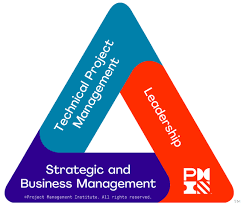
By following the training and passing the PMP exam, candidates will be able to understand and apply the processes and practices required to create efficient and high-performance work teams.
Those that pass the exam will also be able to assess that the success factors for each project exist within the organisation. They will learn to plan projects at each stage and scope: budget, scheduling, scope, quality, project activity, procurement and closure.
This will allow candidates to execute successful projects and create business value.
Topics of the PMP exam
The questions of the PMP exam can be divided into three main domains:
- People: questions that focus on the skills and activities needed to lead a project team effectively.
- Process: questions aimed at verifying that the candidate knows the technical aspects of managing a project.
- Business environment: questions on the connection between projects and organizational strategy and how to acquire the maximum added value from this synergy.
Examples PMP exam questions
The PMI has published two documents with examples and prototype questions.
- Here you can find some examples of multiple-choice questions,
- while here you can find the explanation and examples of the new types of questions.
Example multiple choice question
An accepted deadline for project approaches. However, the project manager realizes only 75% of the work has been completed. The project manager then issues a change request.
What should the change request authorize?
Answers:
A. Additional resources using the contingency fund.
B. Escalation approval to use contingency funding.
C. Team overtime to meet schedule.
D. Corrective action based on causes – right answer.
Example Multiple responses question
You are running a project to engineer and implement a set of business processes and a software solution for customer relationship management. The project involves a large number of organizations―a major corporation and many suppliers of different sizes.
During the project, you observe the effects of the differences between the companies’ corporate cultures.
This leads to different expectations on how the project should be handled—as well as to frequent misunderstandings between stakeholders.
Another effect is a growing degree of distrust and scepticism.
What should you try first to integrate the diverse stakeholder groups?
Answers:
A. Focus on project work. As a project manager, you should not get distracted by big egos.
B. Let the problems grow further until they are obvious for all. Then escalate them.
C. Develop a joint quality policy for the project and seek a commitment by all organizations.
D. Analyze the probability and impact of the risks linked with the situation – right answer.
E. Plan how to respond to the risks – right answer.
Example drag and drop (or matching) question
In this type of question, the candidate has to drag the right process to match the respective process group.
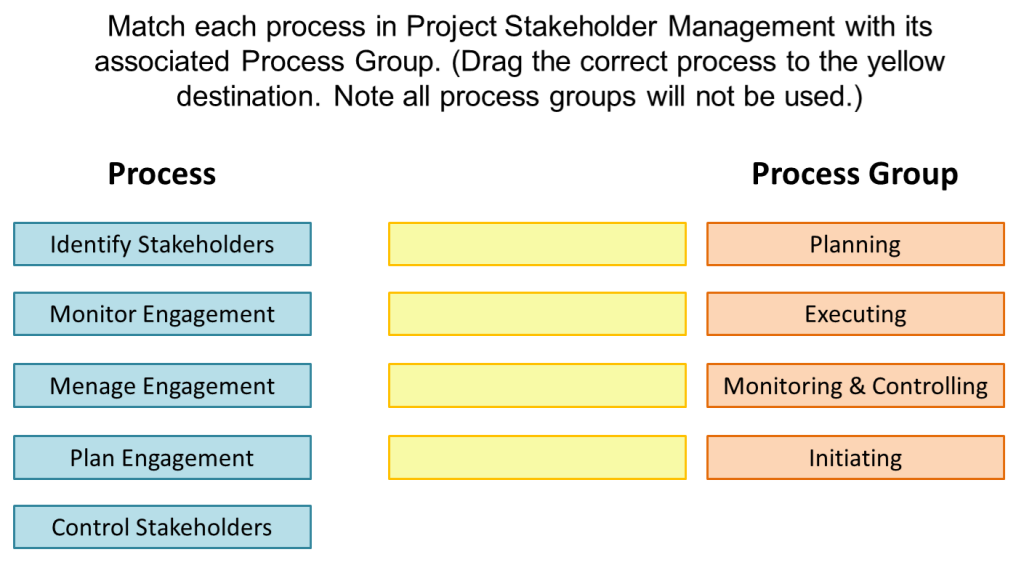
Example hotspot question
The candidate will be asked to interact with the digital graph and make calculations to estimate specific data points.
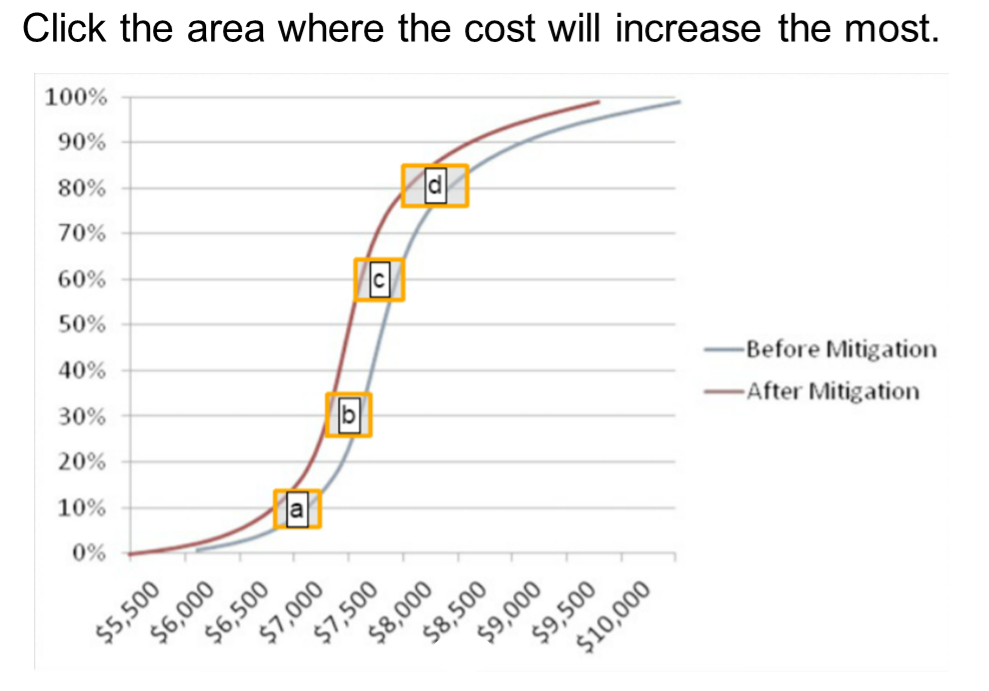
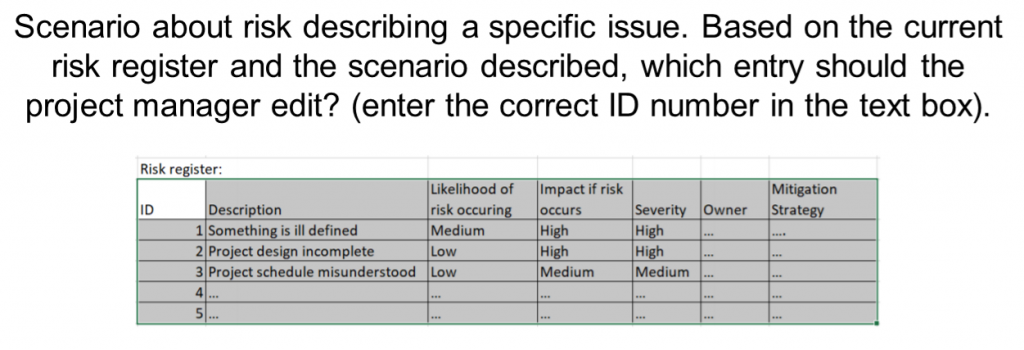
Example fill-in-the-blank question
The candidate will be asked to fill in space within the sentence with the correct answer.
The RACI chart is an example of the ___________________, which shows the relationship between activities and the team members.
The right answer to fill in should be: “Responsibility Assignment Matrix (RAM)”
As an Accredited Trainer Partner (ATP) QRP International organizes PMP exam preparation courses. >
Both our organisation as our trainers are accredited by PMI and can provide you with the training you need to obtain the PMP certificate.
Contact us!







